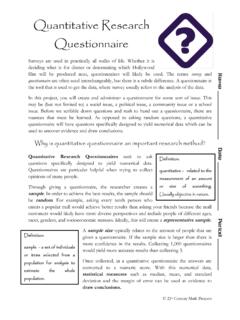Transcription of Georgia Standards of Excellence
1 Georgia Standards of Excellence Standards GSE Geometry Mathematics Georgia Department of Education Richard Woods, State School Superintendent July 2016 Page 2 of 9 All Rights Reserved K-12 Mathematics Introduction Georgia Mathematics focuses on actively engaging the student in the development of mathematical understanding by working independently and cooperatively to solve problems, estimating and computing efficiently, using appropriate tools, concrete models and a variety of representations, and conducting investigations and recording findings.
2 There is a shift toward applying mathematical concepts and skills in the context of authentic problems and student understanding of concepts rather than merely following a sequence of procedures. In mathematics classrooms, students will learn to think critically in a mathematical way with an understanding that there are many different solution pathways and sometimes more than one right answer in applied mathematics. Mathematics is the economy of information. The central idea of all mathematics is to discover how knowing some things leads, via reasoning, to knowing more without having to commit the information to memory as a separate fact.
3 It is the reasoned, logical connections that make mathematics manageable. The implementation of the Georgia Standards of Excellence in Mathematics places the expected emphasis on sense-making, problem solving, reasoning, representation, modeling, representation, connections, and communication. Geometry Geometry is the second course in a sequence of three required high school courses designed to ensure career and college readiness.
4 The course represents a discrete study of geometry with correlated statistics applications. The Standards in the three-course high school sequence specify the mathematics that all students should study in order to be college and career ready. Additional mathematics content is provided in fourth credit courses and advanced courses including pre-calculus, calculus, advanced statistics, discrete mathematics, and mathematics of finance courses. High school course content Standards are listed by conceptual categories including Number and Quantity, Algebra, Functions, Geometry, and Statistics and Probability.
5 Conceptual categories portray a coherent view of high school mathematics content; a student s work with functions, for example, crosses a number of traditional course boundaries, potentially up through and including calculus. Standards for Mathematical Practice provide the foundation for instruction and assessment. Mathematics | Standards for Mathematical Practice Mathematical Practices are listed with each grade s mathematical content Standards to reflect the need to connect the mathematical practices to mathematical content in instruction.
6 The Standards for Mathematical Practice describe varieties of expertise that mathematics educators at all levels should seek to develop in their students. These practices rest on important processes and proficiencies with longstanding importance in mathematics education. The first of these are the NCTM process Standards of problem solving, reasoning and proof, communication, representation, and connections. The second are the strands of mathematical proficiency specified in the National Research Council s report Adding It Up.
7 Adaptive reasoning, strategic competence, conceptual understanding (comprehension of mathematical concepts, operations and relations), procedural fluency (skill in carrying out procedures flexibly, accurately, efficiently and appropriately), and productive disposition (habitual inclination to see mathematics as sensible, useful, and worthwhile, coupled with a belief in diligence and one s own efficacy). Georgia Department of Education Richard Woods, State School Superintendent July 2016 Page 3 of 9 All Rights Reserved 1 Make sense of problems and persevere in solving them.
8 High school students start to examine problems by explaining to themselves the meaning of a problem and looking for entry points to its solution. They analyze givens, constraints, relationships, and goals. They make conjectures about the form and meaning of the solution and plan a solution pathway rather than simply jumping into a solution attempt. They consider analogous problems, and try special cases and simpler forms of the original problem in order to gain insight into its solution.
9 They monitor and evaluate their progress and change course if necessary. Older students might, depending on the context of the problem, transform algebraic expressions or change the viewing window on their graphing calculator to get the information they need. By high school, students can explain correspondences between equations, verbal descriptions, tables, and graphs or draw diagrams of important features and relationships, graph data, and search for regularity or trends. They check their answers to problems using different methods and continually ask themselves, Does this make sense?
10 They can understand the approaches of others to solving complex problems and identify correspondences between different approaches. 2 Reason abstractly and quantitatively. High school students seek to make sense of quantities and their relationships in problem situations. They abstract a given situation and represent it symbolically, manipulate the representing symbols, and pause as needed during the manipulation process in order to probe into the referents for the symbols involved.















